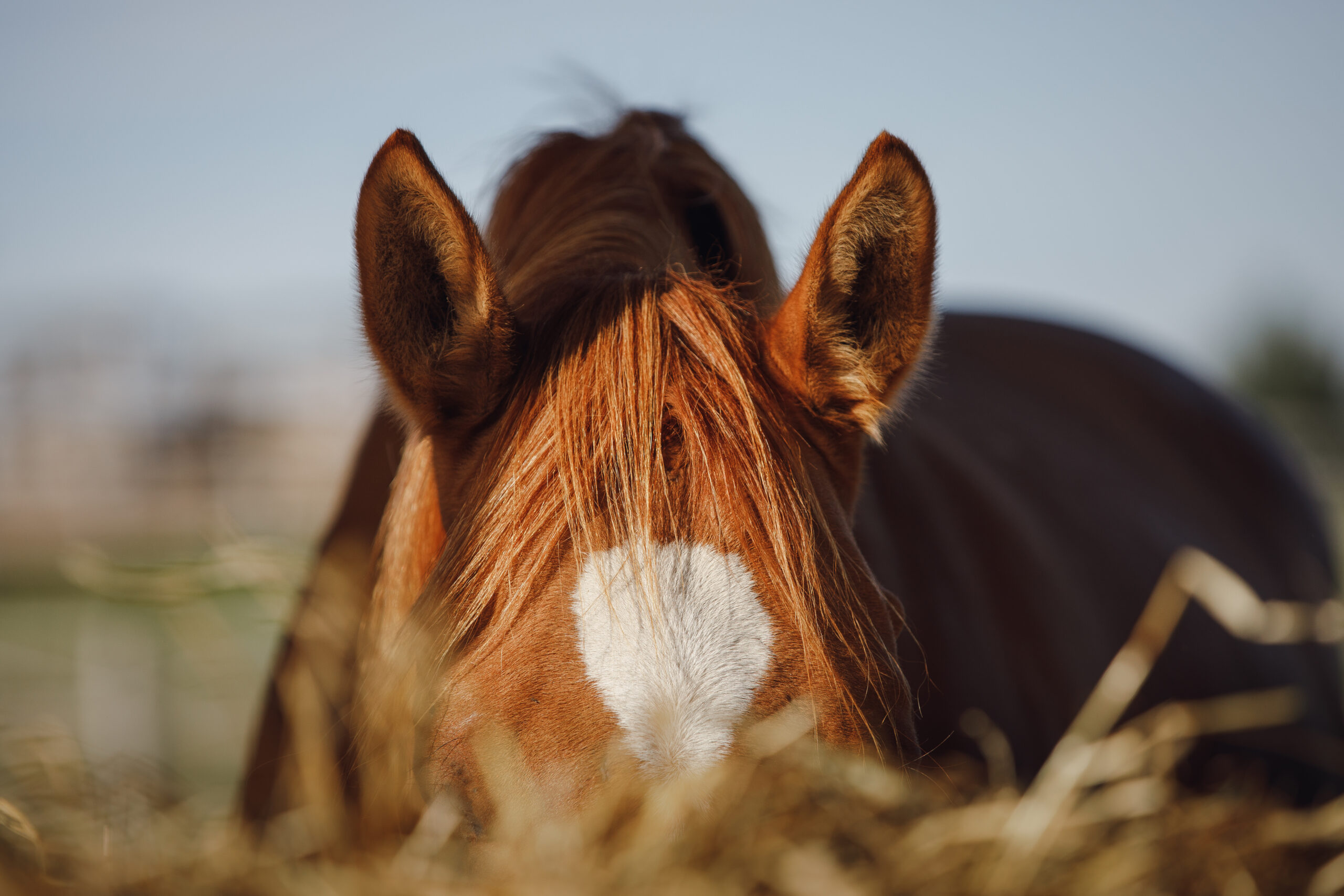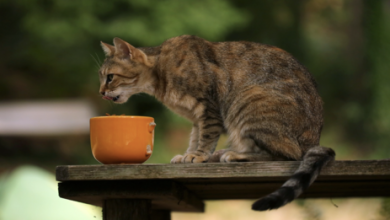Hay Analysis

Insulin resistance, Cushing’s disease, PSSM (polysaccharide storage myopathy), laminitis–if you have a horse that’s been diagnosed with any of these problems, chances are you’ve been urged by your vet to consider hay analysis.

Why? Because it’s important to determine the amount and type of sugars in his ration so that you can keep him healthy. And if you’ve ever followed through and submitted a hay sample, I’ll bet you’ve gotten the results, and thought, “What now?”
While it’s true that hay analysis is an essential tool for correctly balancing a ration, an analysis only helps if you know what it means and how to proceed from there. And believe me, a report on a hay sample from an analytical laboratory is confusing, even for the experts. I’m going to help take the mystery out of hay analysis. First, to help you understand why they matter, I’ll explain a few details about carbohydrates in general. Then I’ll tell you what hay analysis involves, and why it may be beneficial for your horse. Finally, I’ll help demystify those confusing reports by telling you what they mean, and how to use them when you formulate your horse’s ration.
Sugar 101
In recent years, carbohydrates have been the focus of much attention because of their potential role in a wide variety of different health problems such as those named above. A basic understanding of carbohydrate structure and metabolism will help you make much more sense of hay analysis.
A carbohydrate is a molecule made up of carbon, hydrogen, and oxygen atoms. Most commonly with a 2:1 ratio of hydrogen to oxygen. The term “simple carbohydrate” refers to a sugar made up of a single carbohydrate unit, and includes different sugar molecules such as glucose, sucrose, and fructose. The term “complex carbohydrate” means multiple single sugar units are hooked together, and includes most of the fibrous material found in hay and grass. In the equine diet, fructan (composed of many fructose units) is an important complex carbohydrate commonly found in grasses.
What’s the Importance?
Why does this matter? All carbohydrates aren’t metabolized equally. As a general rule, simple carbohydrates and starch (a carb composed of multiple glucose molecules hooked together) are metabolized more easily, and are digested rapidly in the small intestine, at the beginning of your horse’s intestinal tract. When your horse takes in carbohydrates that are absorbed into his bloodstream, his body responds with a release of insulin from his pancreas. The insulin helps regulate where sugars are distributed for storage, in tissues such as fat and muscle. With a diet high in simple sugars and starch, blood glucose elevates rapidly. A feed that has this effect is said to have a high glycemic index.
If your horse is insulin-resistant, meaning his body doesn’t respond properly to insulin, a diet high in simple sugars and starch can lead to persistent high blood-sugar levels. High blood sugar can result in damage to blood vessels, kidneys, and nerves, and to weight loss or even dehydration. On the other end of the spectrum, a horse with PSSM has increased sensitivity to insulin, meaning a high simple-sugar/starch diet can lead to too much sugar being taken up into his muscle tissues. In this horse’s case, too much sugar will accumulate in the muscles and can cause cramping or a tie-up episode. In either situation, starch and simple sugars should be avoided.
Gut Health
Complex carbohydrates, including fructan, can’t be broken down as easily in the small intestine. They require fermentation in your horse’s large intestine (also called his “hindgut”), where bacteria and protozoa work together to break down the larger molecules. Fiber-type complex carbohydrates are an important component of any horse’s diet to help to keep this hindgut working properly.
However, fructan in high levels can wreak havoc on the delicate balance in your horse’s large intestine. Which can be problematic for the horse with laminitis. When the balance of the hindgut is disrupted by these fructans, the normal micro-organisms that live there die, and toxins can be released that can contribute to laminitis signs.
With all these details in mind, it’s easy to see why hay analysis needs to answer much more about the carbohydrates in a sample than simply “how much sugar?”
Hay Analysis: Details
When you look at a bale of hay, you can see how green it appears, whether it’s moldy or yellowed, and whether it’s full of weeds? All good indicators of its overall quality. What you can’t tell with your eyes is what’s really in there. A hay analysis report will tell you how much of what types of carbohydrates are present in the sample. As well as protein levels and those of a variety of other nutrients.
In years past, carbohydrates were divided into two categories: structural and non-structural carbohydrates (NSC), based on where they came from in the plant cell. Plant cells are surrounded by a tough, fibrous cell wall; the carbohydrates in a plant include those from both within the cell and from this cell wall. Cell-wall carbs are mostly fiber (complex carbohydrates), while the material within the cell contributes more to starch and simple sugars.
Recommendations
Historically, dietary recommendations focused on NSCs, a measure of the carbohydrates that form the inner cell. Unfortunately, NSC measurements typically include not only starch and simple sugars, but also fructan. Not only that, but NSC also can mean different things in different laboratories, making it a less useful measurement. Thus, NSC has fallen out of favor, and current recommendations for hay analysis suggest looking at more specific measurements.
Newer tests measure water-soluble carbohydrates (WSC), ethanol-soluble carbohydrates (ESC), and starch. WSC is a measure of the carbohydrates that can be extracted from a sample by dissolving it in water, and includes simple sugars and fructan. ESC measures those that can be extracted by dissolving the sample in 80-percent ethanol and is a subset of WSC that doesn’t include fructan. By subtracting ESC from WSC, you get an estimate of fructans in the sample.
Finally, it’s not only what’s measured, but also how it’s measured that makes a difference. Some labs that still provide only a measurement of NSC get that number by subtracting protein, fat, non-digestible fiber, and ash from the total dry matter (forage minus its water content). In other words, the carbohydrate is just “what’s left.” Techniques referred to as “wet chemistry” actually extract and measure the carbohydrates present in the sample and are the only accurate way to measure WSC and ESC.
How to Do It
To obtain a representative sample of your present hay or hay you’re considering for purchase, you’ll need a hay probe. This is a long metal tube used to extract a sample from a bale of hay. Many of these probes attach to either an electric drill or a hand brace for ease of sampling. Hay probes can be purchased online, with prices starting around $120. (Tip: To help bring the cost down, consider sharing the probe and its cost with another horse owner.)
You should select a minimum of 12 bales of hay (between 12 and 20 is recommended), and use the probe to take a sample from the center of each bale. It’s best to sample from the small end of a square bale, between the strings.
If you’re testing the large round bales, first you should remove the outer one-half inch of hay to eliminate dust and debris that can accumulate there. Sample toward the center of the bales, midway up the sides, and take your samples from 12 to 18 inches deep within the bales. After you obtain each sample, plunge it into a sealable plastic bag to send to the lab. Your final sample should weigh approximately one pound.
Although many labs exist that do forage analysis, few are geared toward horse owners and perform wet-chemistry analysis of WSC, ESC, and starch. Equi-Analytical Laboratories (equi-analytical.com) is the most popular lab that provides these services.
What’s It All Mean?
Let’s say you’ve collected your sample and submitted it to the lab. What should you do with the results?
Sadly, no firmly established guidelines exist for “safe” levels of carbohydrates. However, most experts agree that 10 percent is a reasonable cut-off for the total WSC plus starch value for your at-risk horse.
Let’s remember, though, that all sugars aren’t created equal. And that if you’re comparing hays, you should consider simple sugars and starch vs. fructans, depending on your horse’s condition. Your insulin-resistant horse, or horse with PSSM, needs hay with a low glycemic index-less starch and simple sugar to keep his blood sugar levels under control. On the other hand, you should avoid high-fructan hay for your laminitic horse.
For further understanding, let’s look at some examples.
Hay #1:
Starch, 2 percent; WSC, 12 percent; ESC, 8 percent.
Total WSC plus starch is 14 percent, higher than ideal for any at-risk horse.
WSC minus ESC equals 4 percent fructans.
Hay #2:
Starch, 2 percent; WSC, 8 percent; ESC, 6 percent.
Total WSC plus starch is 10 percent, acceptable for an at-risk horse.
WSC minus ESC equals 2 percent fructans.
Hay #3:
Starch, 2 percent; WSC, 8 percent; ESC, 2 percent.
Total WSC plus starch is 10 percent, acceptable for an at-risk horse.
WSC minus ESC equals 6 percent fructans.
Results
Hay #1 should be avoided for any at-risk horse. Both Hay #2 and Hay #3 are within an acceptable range of carbohydrates. If your horse has laminitis problems, Hay #2 is probably the best choice because of its lower fructan level. For your insulin-resistant horse, go with Hay #3, because it has the lowest glycemic index.
What If You Can’t Analyze?
Hay analysis is only practical if you have a source of hay that remains consistent for your horse, such as that obtained from a single grower. What if you order from the feed store monthly in small amounts, or board at a stable where you have minimal control, yet need to manage the carbohydrate content of your horse’s ration? The following simple tips can help your horse.
Soak his hay. By soaking hay in hot water for 30 minutes, or for 60 minutes in cold water, you can extract as much as 30 percent of the carbohydrates before feeding.
Don’t overgraze pastures. Fructans will be higher in the lower inches of the plant and thrive when grasses are stressed. Keep your pastures fertilized and healthy.
Graze in early morning. Fructan is higher in the afternoon and evening during a sunny day. (Exception: sunny day, cool night. Avoid early-morning grazing in this case, because the plant won’t have used up its energy store of fructan overnight. (One reason why turnout in the spring and fall is more risky for a laminitic horse.)
Use a grazing muzzle. These devices allow your horse to be on pasture while minimizing grass consumption. Good for when it’s very difficult to calculate or control sugar levels in the pasture.
Play the odds. Choose feeds that tend to have a lower glycemic index. This includes wheat bran, beet pulp, rice bran, soybean hulls, and alfalfa. (Feed alfalfa carefully, however, as its higher calorie content can make your horse fat. If he’s fat, he’ll produce more glucose in his liver causing blood-sugar levels to elevate.)



